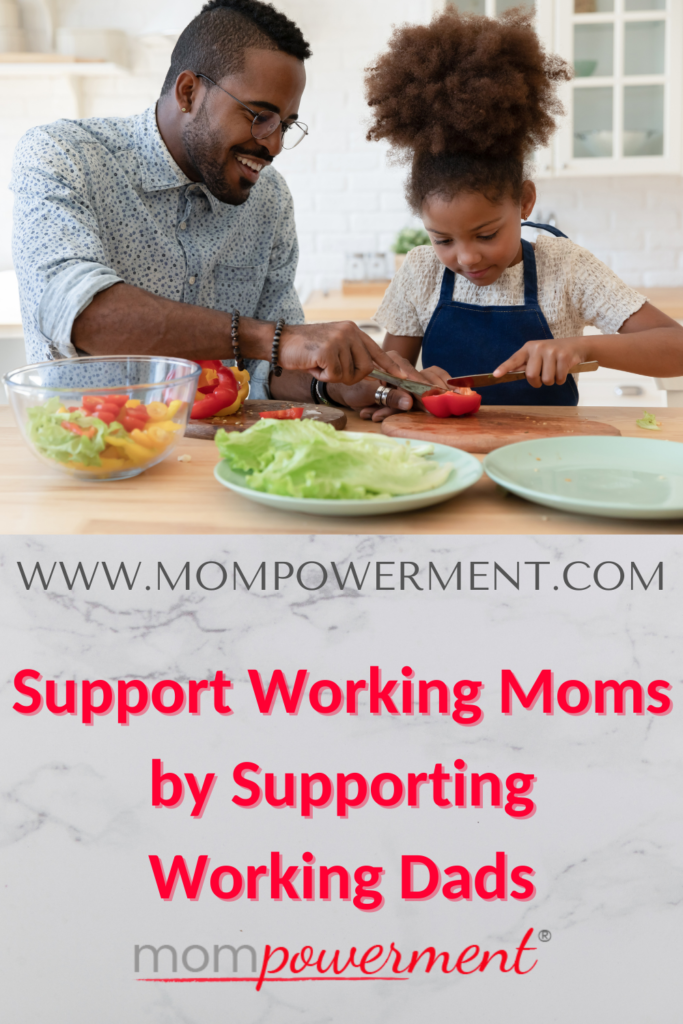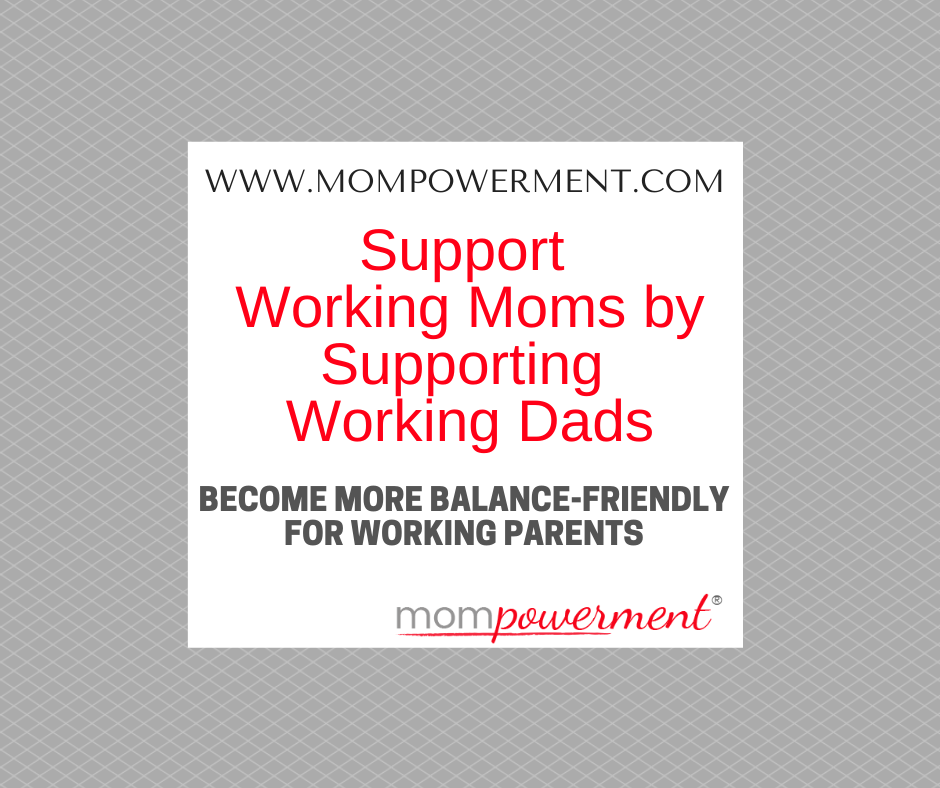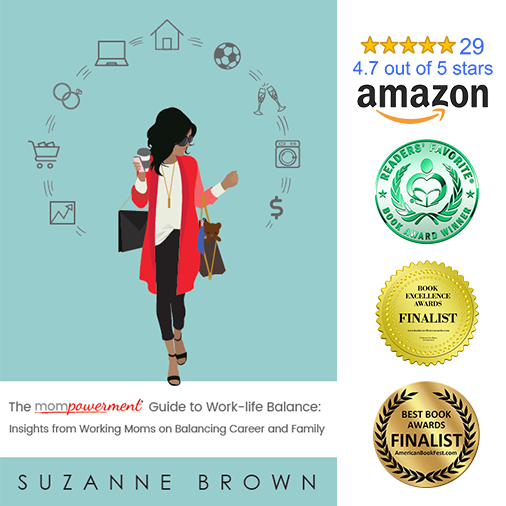
I usually write and talk about supporting working moms. In my recent LinkedIn Thursday workplace strategy video for managers, senior leaders, and HR professionals, I talked about a different way to think about supporting moms in your organization. When you support working dads and working moms, it gives working dads the space and opportunity to be better partners at home. It removes the stigma of working mothers taking time off or asking for greater flexibility (and hopefully getting both from you). So, yes, you can support working moms by supporting working dads as well.
The Great Realignment includes working dads
You hear a lot about working mothers making changes during the pandemic. Remember how 1.4+ million working mothers quit during the pandemic? Interestingly, working dads are making changes during the Great Realignment (let’s stop calling it the Great Resignation!!), looking for new opportunities that often better fit their lifestyle needs (often at a better salary too since it’s such a competitive marketplace). A recent McKinsey survey shows that 46+ percent of working fathers are considering leaving their job. I imagine some part of the difference between working moms and dads in this survey is that many working moms have already left their jobs. That said, almost half of working dads in the workplace looking to leave their current role is a huge number and a big wake-up call for employers.
And consider the numbers we’re talking about. Based on 2019 Census data, approximately a third of women in the workforce are working mothers, working dads represent more than 61% of men, according to the Men’s Fertility and Fatherhood report. Yes, that is almost two-thirds of men in the workforce. While I’ve read that 40 percent of the workforce is working parents, my calculations get closer to 48 percent, so almost half.
Why working parents leaving matters to you?
If you look at the recent posts about flexibility and a holistic view of wellness, I talk about the importance of attracting and retaining working mothers in your organization. I’ve previously shared about a diverse workforce creating innovative, relevant solutions and leading to higher financial results for your organization.
The McKinsey survey I mentioned above talks about the importance of working parents (moms and dads) as part of the infrastructure and future of your organization. Consider how these working parents fit today and long-term. “Parents also tend to belong to a crucial category: midtenure employees who play key managerial and individual-contributor roles. They are leaders or are on the leadership track. Any organization that loses this cohort can take a big hit to its institutional knowledge, including its managerial capabilities and mentorship pipeline.”
And here is another layer of this challenge. A Catalyst-CNBC survey found that 32 percent of employees are looking for another job in the same industry and 22 percent will start their own business. Consider that for a moment. If you don’t have balance-friendly policies in your workplace, about half of your employees could leave. A third could go to your competitor which means you not only lose that institutional memory and talent, but your competitor gains it. And more than a fifth could start a company – a competitor to what you offer. Sure, you could hire him/her as a freelancer, but so could your competitor.
Offer paternity leave
You might already be giving maternity leave, but what about paternity leave? Did you know that working dads who take paternity leave are more likely to help with childcare and household duties? Catalyst shares interesting statistics and insights about this. While you might not be able to facilitate working dads being better partners at home, you can provide opportunities for them to have time at home and/or with children. This helps them be more available and involved from the very beginning.
A recent McKinsey survey shares that working fathers who get paternity leave are more loyal, engaged, and productive as employees. “Many of the fathers we interviewed said that they felt more motivated after taking leave and that they were considering staying in their organization longer. They also said that the leave led them to change the way they work, becoming more productive and prioritizing their time better.” That same McKinsey research highlighted the general effect of giving working dads leave when baby arrives: “paternity leave can be a key part of higher satisfaction for fathers, who in turn make happier employees over the longer term.”

Provide flexibility
The programs you create that embrace flexibility should be open to all employees. You never know what caregiving challenges families face. And that caregiving could be for an elderly family member, not necessarily a child. That said, working fathers should be part of the conversation about flexibility that you’re having as decision-makers in your organization.
Like working mothers, working fathers are looking for greater flexibility in the workplace. They have had a taste of what it’s like to take kids to sports or activities and enjoyed being present. And they don’t want that to go away.
Know that companies are changing. A Survey Monkey survey shares that “52 percent of respondents say their employer has improved their childcare offerings and policies since last year.” If you’re not one of these employers, could your employees flock to the competitors that are making changes?
And remember that you can achieve great things as a company without driving your employees into the ground. Giving working parents the space to live their lives won’t make their productivity go down. It will give them the space to live their whole lives. That helps with things like productivity. It removes stress and helps with burnout. Trying to create a culture only about work doesn’t lead to good things long term.
Train managers
I have heard a saying my entire career. People don’t leave jobs; they leave managers. While the pandemic has changed things up a bit in that people are absolutely leaving their jobs because of outside stressors, managers and their lack of empathy and unsupportive action during the pandemic really matter. It appears men (i.e., working dads) care more about this. That same Survey Monkey survey shows that 44 percent of men are walking out of jobs because their “manager has not cared about their concerns during the pandemic.” Yes, you read that right.
This is a moment where empathy matters. Working parents, not only working moms, struggle with things like childcare. Working dads are also feeling the effect of burnout. Like working moms, working dads want to be present in the lives of their children. Working dads have taken on more roles with children and life in general at home during the pandemic. They are enjoying coaching their child’s basketball team or opening cars in the carline during drop-off.
Train your managers to use empathy as their normal way of engaging with employees. Help them understand the benefits of working parents, both working moms and dads, within your organization. Empower your managers to allow flexibility for employees, whether through company-wide or team policies.
Be a senior role model
When it comes to your attempt to support working moms by supporting working dads, as a senior leader within your organization, you have a special and important role. If you’re a dad, let people know. Show how you attend your child’s sports events, coach his/her sports team, take kids to tutoring, shuttle kids to practice, etc. Take time off for paternity leave so other working dads realize it’s not going to set them back in their careers. Normalize being an engaged working dad by scheduling time for these events on your calendar. Set parameters with the whole team to avoid early morning or late afternoon meetings.
Share how you’re an engaged working dad in places like your company’s intranet. Bring it up in external interviews that show how you continue to be successful and are engaged as a working parent. Talk about the realities of working parenting as you engage with employees in meetings. Put family photos behind you on Zoom and on your desk at the office. It’s time to parent out loud. Your showing how you make this work authentically signals to your employees that this is culturally supported. It shows that you want them to show up as their whole selves. It gives them permission to parent out loud as well.
So, there you have it. You’ve got several ideas on how you can support working moms by supporting working dads. Yes, it’s a different way of thinking but you can absolutely do this. Where will you start? Already started making these changes? Where are you struggling?
Remember that Mompowerment can be a resource to help you as you do the strategic planning (e.g., schedule a few consulting hours or day-long session) or as an expert to talk to your employees or specific ERGs about work-life balance. Email me directly with questions or for more information. We can move quickly to help you better support working moms and dads in your organization with practical tips and actional ideas. And don’t forget to download the Mompowerment white paper on how to Become a More Balance-friendly Company for Working Mothers.


